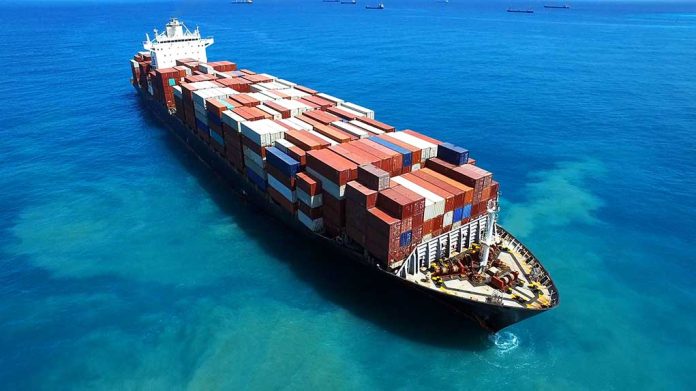
(LibertyInsider.org) – The Panama Canal, a vital shipping route allowing ships to carry cargo between international ports, faces unprecedented challenges stemming from a severe ongoing drought. Water levels within the canal are lower than they have been in years, making it difficult for ships to navigate safely.
Panama first began suffering under the weight of one of its driest periods in over a century in early 2023. The problem mostly stems from El Niño, a climate pattern that increases water temperatures throughout the Pacific Ocean. Water levels in and around the Panama Canal and Gatun Lake are now between 70 and 50% shallower than normal in some spots.
Large cargo ships with up to 50-foot drafts had few issues traversing the Panama Canal until recent years. Now, those vessels no longer have the clearance needed to pass safely.
The Panama Canal Authority began taking steps to address the problem earlier this year. It reduced the maximum draft allowed from 50 to 44 feet and decreased the number of daily transits. Ships that exceed these limits now face a difficult decision: remain in the growing queue, remove some cargo to lighten their load and sail through, or turn back.
Minor transit hindrances significantly impact global supply chains and shipping time each time they occur. The stranding of the Suez Canal container ship delayed international trade for months in 2021. Consumers, businesses, and industries all over the world felt the effects.
While it is larger than the Suez Canal, the Panama Canal is still vulnerable to disruptions, and slowdowns at the popular crossing point can have an even greater impact on global trade. Each idle day for a waiting vessel represents not just lost income but delayed deliveries of Christmas gifts, machine parts keeping assembly lines moving, and delicate medications for those in need.
According to the Canal Authority, the backlog of waiting ships has swollen from 90 vessels to nearly 160 in the wake of the changes. Crews are spending more time in open waters, and port cities counting on timely cargo are already reporting increased costs and losses.
Unfortunately, it doesn’t look like Panama’s problems will be resolved any time soon. Increasingly early starts to the dry season and hotter-than-average temperatures could reduce water levels to near-record lows by as soon as 2024, threatening the crossing point’s long-term viability.
Copyright 2023, LibertyInsider.org














